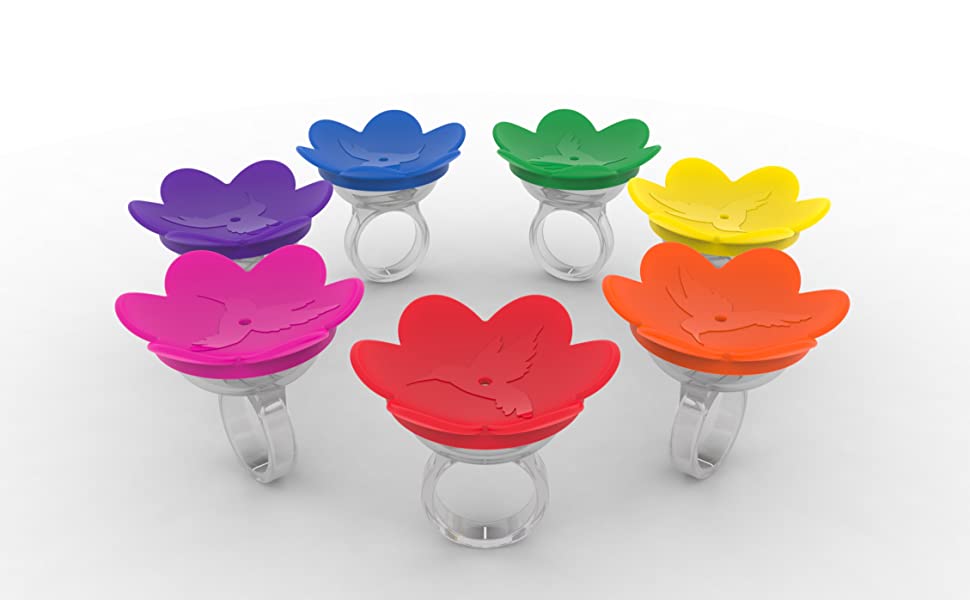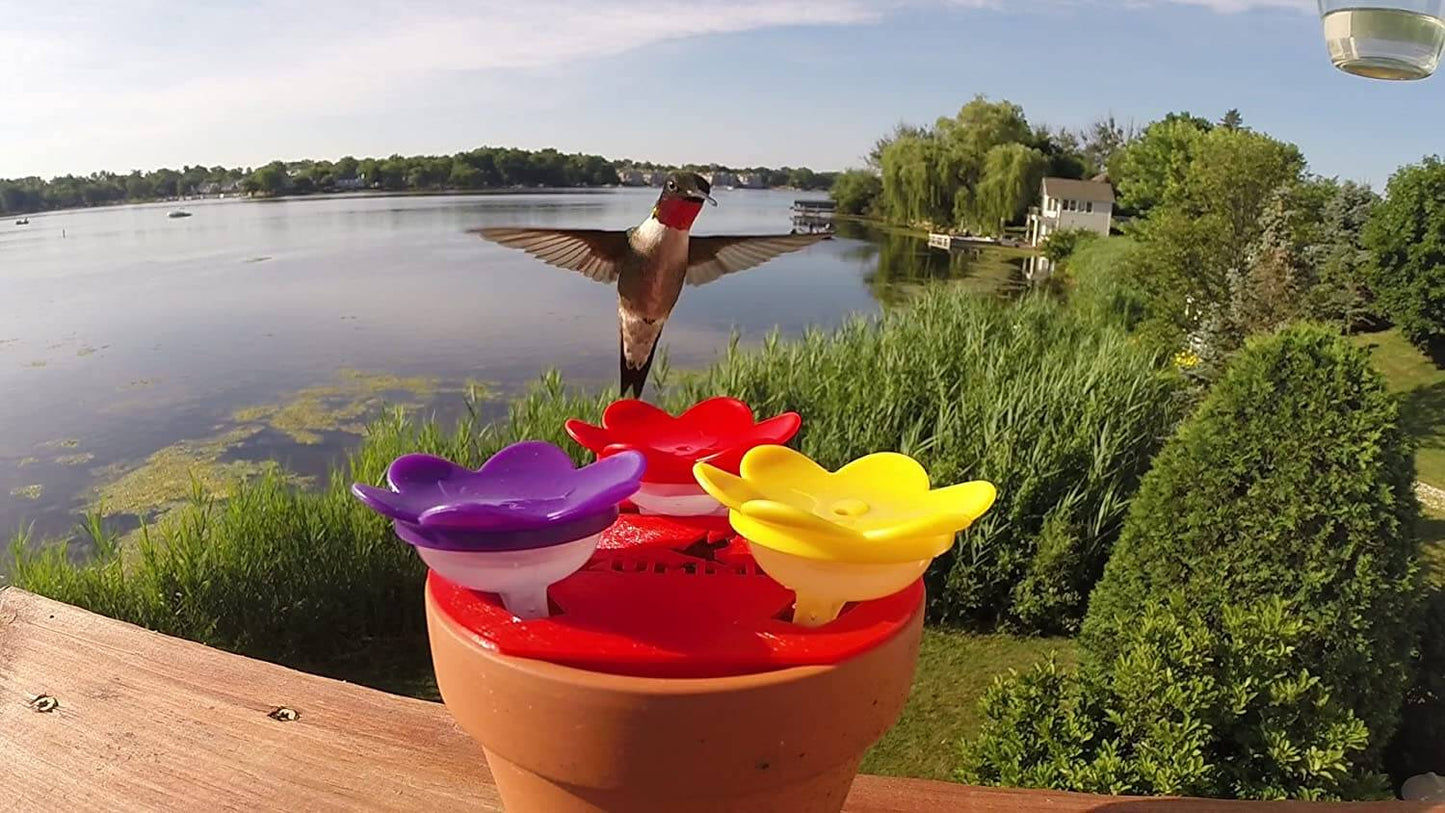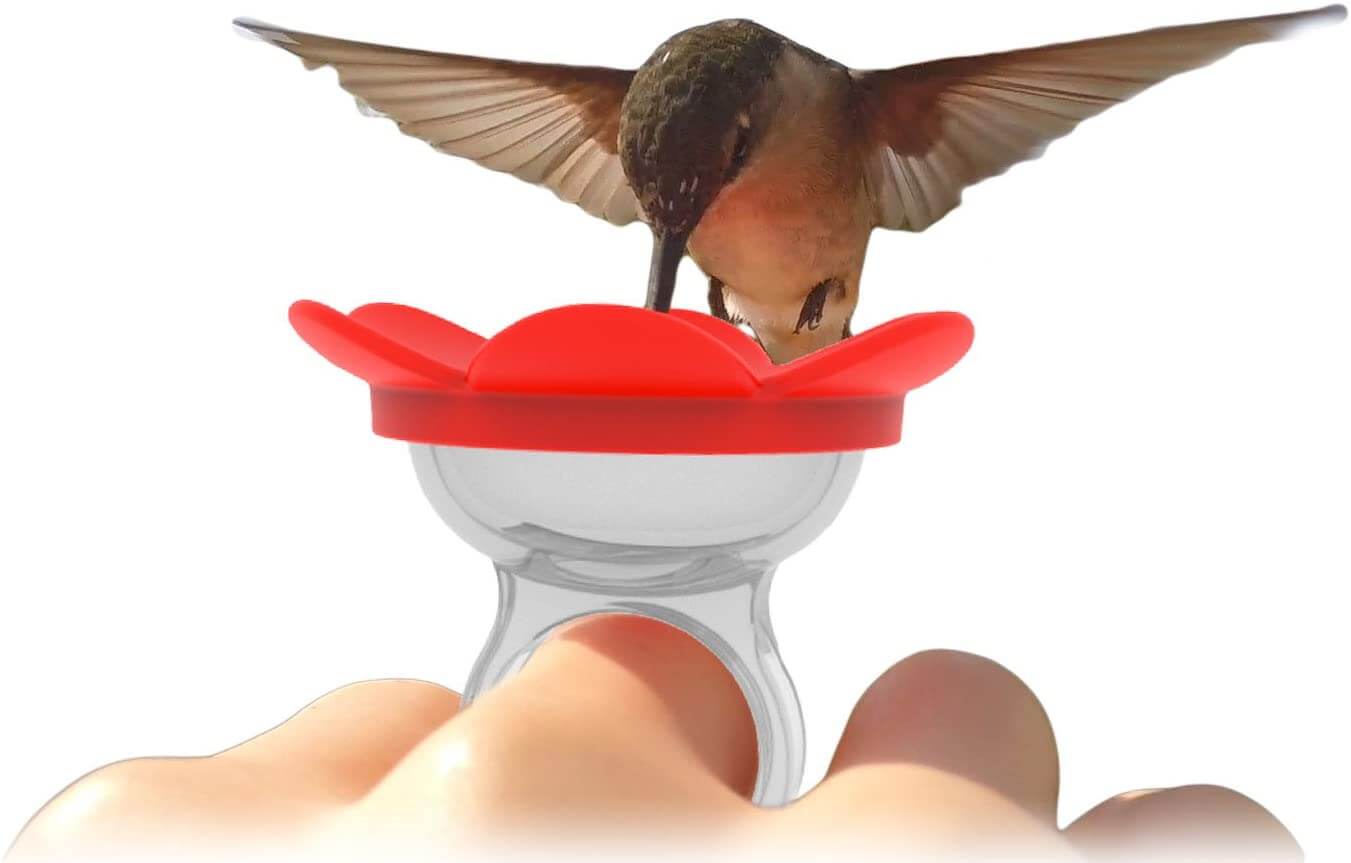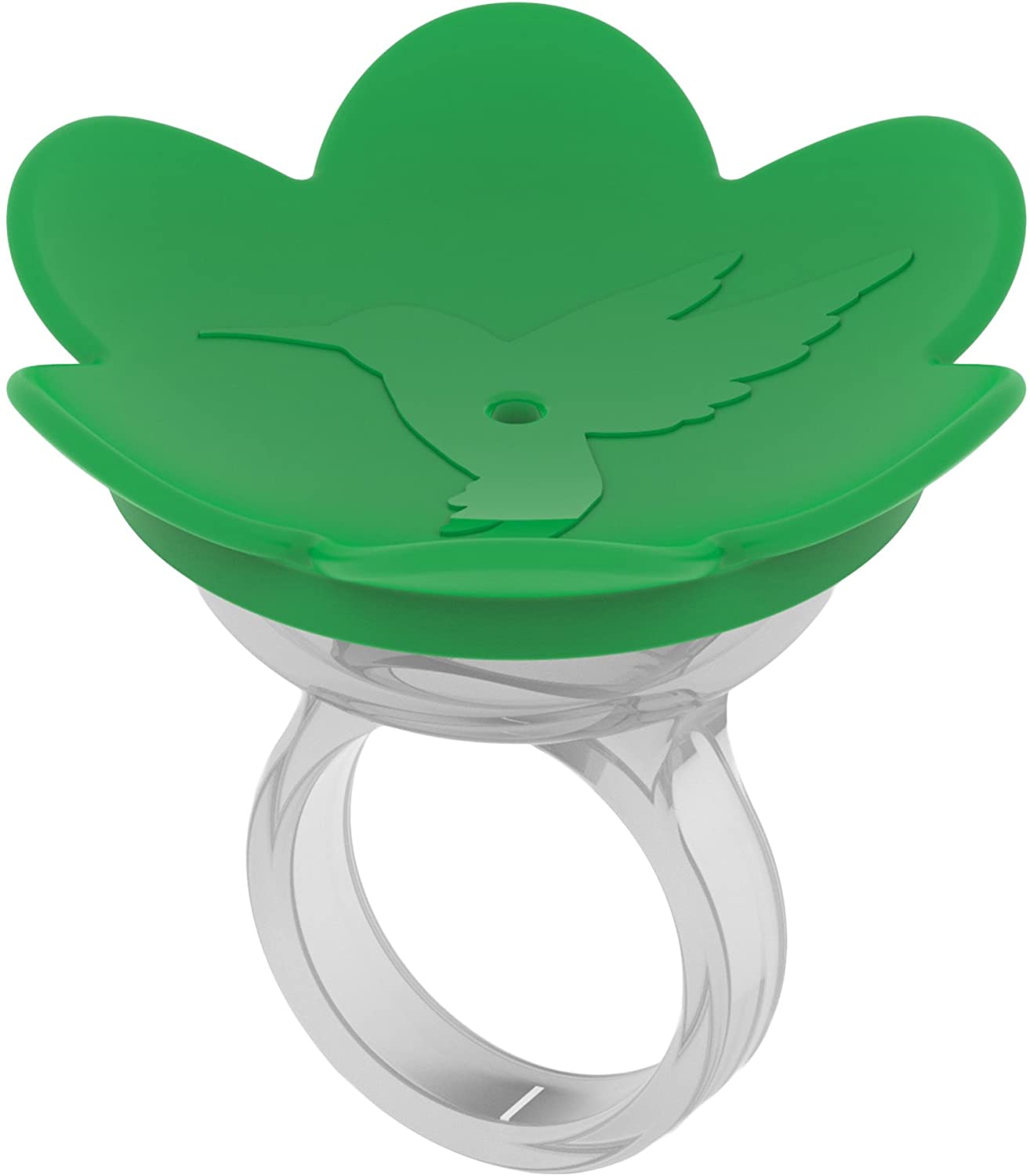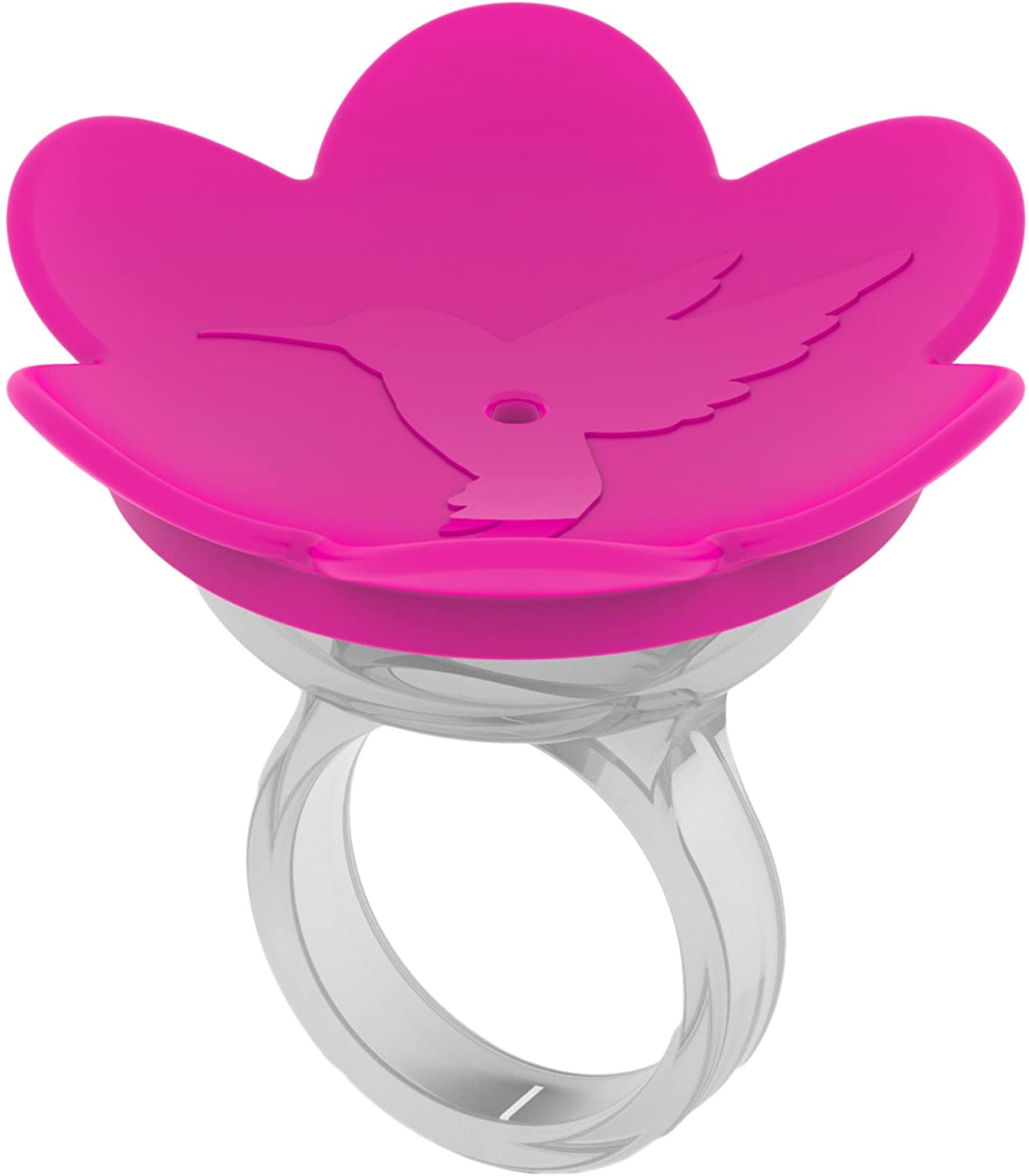1
/
of
7
Hummingbird Ring Feeder
Hummingbird Ring Feeder
Regular price
$ 16.99 USD
Regular price
$ 19.99 USD
Sale price
$ 16.99 USD
Unit price
/
per
Couldn't load pickup availability
Attract Hummingbirds to Your Yard – And to Your Hummingbird Ring! The Hummingbird Ring is a great feeder for an up close and personal experience with hummingbirds, but if the birds don't recognize your yard as hummingbird-friendly, they won't ever visit your ring. Fortunately, it can be easy to attract hummingbirds to your yard and help them find your Hummingbird Ring. What Hummingbirds Need Hummingbirds are interested in four things in every yard they visit – food, water, shelter and nesting sites. If your yard provides all four in abundance, you'll soon have plenty of hummingbirds flocking to visit.
Food Nectar-rich flowers are a key food source for hummingbirds, and blooms with tubular shapes are best for their needle-like bills. Bee balm, salvia, petunias, columbine and trumpet vine are just a few options that attract hummingbirds, and planting these flowers near a deck, patio or other seating space where you will offer your Hummingbird Ring is best to get birds used to feeding in that area. A flower pot with nectar blooms on a patio table is a great idea, or hang pots from a gazebo or arbor in the seating area. You can even tuck a Hummingbird Ring (or two or three) into the pot to get hummers accustomed to visiting the feeder before it is on your finger. Other nectar feeders can also be hung nearby for hungry hummers.
Water While hummingbirds get plenty of liquid from the nectar they drink, they still visit water sources for bathing and preening. Because these birds are so tiny, they avoid deeper water sources and instead prefer shallow bubblers, such as bubbling fountains, where they will splash about. Misters are also a great option and hummingbirds will fly right through the mist before perching to preen. The moving water of bubblers and misters also helps attract hummingbirds with splashing noises and glittery sparkles. Positioning water near the feeding area will help catch hummingbirds' eyes and keep them close to your Hummingbird Ring as well. If you don't have a bubbler or mister, turning sprinklers on to light spray settings can help attract hummingbirds that may fly right through the spray to bathe.
Shelter In between sips from your Hummingbird Ring, beautiful flowers or visits to the water, hummingbirds need to perch and rest. Shrubs, vines and trees all provide excellent perches, and hummingbirds will opt for perches that give them commanding views of the nearby area so they can watch for predators or any competing visitors to their favorite feeding areas. Clotheslines, trellises and arbors are other convenient perches hummingbirds will take advantage of, or you can add quaint hummingbird-size swings to your yard. If different perches are close to prime feeding areas, the birds will be encouraged to stay nearby.
Nesting Sites The same trees and shrubs that provide good shelter for resting hummingbirds are also ideal nesting sites for these tiny birds. Thorny shrubs are also favorite nesting sites, as they provide an extra layer of protection from predators. Because hummingbirds can be nervous nesters, planting nest-friendly plants in a quiet corner of the yard further away from the feeding area or water will help the birds feel more at ease. Providing nesting materials nearby, such as cotton fibers, spider webs, moss and lichen, will also help encourage hummingbirds to take up residence.
By meeting hummingbirds' basic needs in thorough ways, it is easy to bring these flying jewels right to your yard. As they learn just how safe and convenient your yard is, they will be more willing to visit your Hummingbird Ring and give you that amazing experience of hand-feeding a hummingbird.


HAND FEEDING INSTRUCTIONS
- Remove petals and fill with fresh nectar or fill with a syringe through the hole in the center of the petals. Store-bought or homemade nectar is acceptable. Red dye is not necessary and should not be used.
- Attract hummingbirds to your yard by placing the Hummingbird Ring in a visible location. Place it in a small glass, shot glass or small flower pot filled with sand or dirt. Also, you can use one of our Hummingbird Trainers which are available on our website. Place your Hummingbird Ring in the vicinity of other nectar feeders or hummingbird friendly flowers.
- Keep the nectar fresh and the Hummingbird Ring clean and full. Change the nectar in ALL feeders every 3-5 days to maintain a healthy hummingbird population. If the nectar appears cloudy, or you see black residue (mold) change immediately. Change more often in warmer weather. The Hummingbird Ring is top rack dishwasher safe.
- Once the hummingbirds start feeding from the Hummingbird Ring, continue to keep it clean and full. The more they use the Hummingbird Ring, the more comfortable they will become.
- After the hummingbirds are used to the Hummingbird Ring, you can start to introduce yourself. Start by sitting in the vicinity of the Hummingbird Ring while they feed, so they get used to feeding around you.
- After they become more comfortable with you and the Hummingbird Ring, it is time to start hand feeding them. You can remove your hanging feeders, so the hummingbirds only come to the Hummingbird Ring, but it is not necessary.
- Place the Hummingbird Ring on your finger and sit in the vicinity where the hummingbirds have been feeding from it. Sit very still and be patient. The hummingbirds will typically check you and the Hummingbird Ring out before they come into feed.
- Spend as much time as possible getting them used to you and the Hummingbird Ring. With a little diligence and patience, they will come. Then enjoy observing this amazing creature close up. HAVE FUN!
Share

